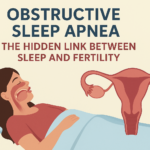LATEST ADVANCES
By Dr. Manvir Bhatia and Ms. Garima Sharma

INTRODUCTION
We hated to sleep in childhood and now we just want to lie down on the bed for just even as little as 5 minutes. We consider sleep as a reward. What if this reward turns into a curse?
Some people have excessive daytime sleepiness despite completing 7- hours of sleep at night. They consider it a blessing as not everyone is lucky to get sleep as they age. But what if this becomes an obstacle in your daily activities, workplace, school, college, and public places like travel or while driving? Dangerous, right? Excess sleep can be a sign of a condition called hypersomnia, narcolepsy, or OSA.
We will look at the different aspects of narcolepsy and hypersomnia in this blog and we assure you that by the end you will be confident that you have hope for a better future with us.
WHAT IS HYPERSOMNIA?
Hypersomnia is defined as an increased quantity of sleep during a 24 h period or an objectively assessed excessive need for sleep (an objective assessment of an excessive quantity of sleep requires ≥10 h of sleep duration during 24 h, with night-time providing ≥9 h of sleep duration).
SYMPTOMS OF HYPERSOMNIA:
If you have hypersomnia, you may:
- Regularly nap during the day and do not feel refreshed.
- Fall asleep during the day, often while eating or talking
- Still sleep for long hours at night.
Causes of hypersomnia
Other conditions may be related to excessive sleepiness (hypersomnia) that can have additional symptoms.
- Narcolepsy- falling asleep anytime, anywhere, without warning.
- Restless leg syndrome.
- Depression
- Bipolar disorders
- Sleep apnea
Some medicines, drinking too much alcohol, and taking drugs can also cause excessive daytime sleepiness.
Sometimes there is no known cause. This is called idiopathic hypersomnia.
WHAT IS NARCOLEPSY?
A chronic neurological sleep-wake disorder, narcolepsy is characterized by excessive daytime sleepiness and cataplexy (sudden loss of muscle tone while a person is awake leads to weakness and a loss of voluntary muscle control) in narcolepsy type 1. It is common for patients with narcolepsy to have difficulties with concentration, memory retention, and daytime fatigue.
If you or your loved one have a lifelong sleep-wake disorder that’s impairing their quality of life, productivity, and educational and employment outcomes, you need to pay attention. The burden of this disease relates to frequent comorbid conditions, including aspects of emotional, metabolic, sleep, and immune health. We hope to encourage a multidisciplinary approach, to collaborate with the one suffering from the disease and a broad clinical team, and to maximize clinical and quality-of-life outcomes, for those living with narcolepsy.
SIGNS AND SYMPTOMS OF NARCOLEPSY
If you notice any of the following symptoms, please consult your doctor:
- Excessive daytime sleepiness. Excessive daytime sleepiness usually is the first symptom to appear and is often the most troublesome, making it difficult for you to concentrate and fully function.
If you have narcolepsy, you may be falling asleep without warning, anywhere, anytime. For example, you may be working or talking with friends and suddenly you nod off, sleeping for a few minutes up to a half-hour. When you awaken, you feel refreshed, but you get sleepy again after a while.
2. Decreased alertness and focus. You may also experience decreased alertness and focus throughout the day.
3. Sudden loss of muscle tone (Cataplexy). If your speech is slurred or Complete weakness of most muscles that may last up to a few minutes.
It is uncontrollable and is triggered by intense emotions, usually positive ones such as laughter or excitement, but sometimes fear, surprise or anger. It is possible to experience unexpected drooping of the head or bending of the knees when you laugh, for instance.
The experience of episodes of cataplexy may range from only one or two a year, while others have numerous episodes daily. You may not experience cataplexy as well as not everyone does.
4. Sleep paralysis. You may experience a temporary inability to move or speak while falling asleep or upon waking. These episodes are usually brief — lasting a few seconds or minutes — but can be scary. The condition may have been obvious to you and you can recall it without difficulty afterward, even though you didn’t control what was going on.
This sleep paralysis mimics rapid eye movement (REM) sleep, characterized by temporary paralysis. This temporary immobility during REM sleep may prevent your body from acting out dream activity.
5. Changes in rapid eye movement (REM) sleep. Dreamy sleep. It can occur at any time of the day if you have narcolepsy. Transition to REM sleep is usually within 15 minutes of falling asleep.
6. Hallucinations. These hallucinations happen as you fall asleep or occur upon waking up. Feeling as if there is a stranger in your bedroom, for instance. When you begin dreaming, you may not yet be asleep, so your dreams may seem real to you, causing hallucinations that are particularly vivid and frightening.
WHEN DOES THE FIRST SYMPTOM PRESENT?: First symptoms of narcolepsy typically present between the ages of 10–25 years with significant variation in its presentation.
Other associated problems:
- Neuropsychiatric symptoms:
- Depression
- Anxiety
- Psychosis
- Cognitive impairment: trouble remembering, learning new things, concentrating, or making decisions that affect their everyday life.
- Higher prevalence of obesity, diabetes mellitus, hypertension, and dyslipidemia compared to healthy controls.
1. WHAT CAUSES NARCOLEPSY?
1. An autoimmune disorder. A person’s immune system attacks the brain cells that produce hypocretin, resulting in a shortage of this chemical.
2. Family history. If you got the gene for it in the family.
3. Brain injury or tumor. The area of the brain that controls REM sleep and wakefulness is injured by trauma, tumor, or disease.
4. Infections.
5. Environmental toxins, such as pesticides, and heavy metals.
6. Smoking or secondhand smoke.
2. HOW IS NARCOLEPSY DIAGNOSED?
A neurologist and sleep specialist doctor can make the diagnosis of narcolepsy only after the following tests are done and analyzed. It’s crucial that you get the diagnosis right as it guides the whole course of your future treatment plan.
- Polysomnography (PSG)- an overnight sleep study test followed by a multiple sleep latency test (MSLT).
- A diagnosis of narcolepsy type 1 is confirmed by:
- Daily excessive daytime sleepiness for ≥3 months,
- A mean sleep latency of ≤8 min
- ≥2 sleep-onset rapid eye movement periods (SOREMP) on the MSLT,
- The presence of cataplexy
- Reduced levels (≤110 pg/ml) of the cerebrospinal fluid neuropeptide hypocretin 1
- Narcolepsy type 2 (NT2) is defined by
- excessive daytime sleepiness and the same MSLT criteria as for NT1.
- Cataplexy is absent and, if measured, normal hypocretin 1 levels (i.e., >110 pg/ml) support the diagnosis
- Idiopathic hypersomnia (IH) is characterized by excessive daytime sleepiness with a mean sleep latency of ≤8 min and <2 SOREMP, or a total sleep time of >660 min across a 24 h period
TREATMENT OF NARCOLEPSY
Timely, effective, and appropriate treatment results in improved clinical outcomes, education, and employment opportunities, and enhanced quality of life.
Medications and lifestyle changes are the management options. The goal is to reduce daytime sleepiness and improve alertness.
MEDICATIONS
Many medications with many different mechanisms of action in the brain are available because of advancements in medical science, for the treatment of excessive daytime sleepiness (EDS).
Medications that promote wakefulness.
These agents help you stay awake during the day.
Modafinil (Provigil®) or armodafinil (Nuvigil®). They are first tried as they have fewer side effects and are less addictive than traditional stimulants. Note that they do not treat cataplexy or other REM sleep-related signs of narcolepsy.
Solriamfetol (Sunosi®) is used to improve wakefulness in adults with narcolepsy. Pitolisant (Wakix®) is approved to treat EDS in narcolepsy. It has no greater risk of abuse or addiction.
Sodium oxybate
Sodium oxybate (Xyrem®) – The only FDA-approved medication used to treat daytime sleepiness and cataplexy in patients with narcolepsy. Taken in liquid form before bedtime and 2.5 to 4 hours later and not during the daytime. Salt should be limited in the diet since it has a high content of sodium.
Stimulants
These are the last alternative to treatment as they have side effects just like that of caffeine like agitation, nervousness, and palpitations. Amphetamine/dextroamphetamine or dextroamphetamine mixed salts (Adderall®, Dexedrine®) and methylphenidate (Ritalin®, Focalin®, Concerta®) are very effective for treating EDS. They are generally started at a low dose and increased gradually as needed. High blood pressure, heart arrhythmias (irregular heartbeats), and drug abuse have been reported. Hence close monitoring is advised.
Antidepressants
Two types of antidepressant medications are used to treat cataplexy, hallucinations, disrupted nighttime sleep, and sleep paralysis:
Tricyclic antidepressants (TCAs) and selective serotonin reuptake inhibitors (SSRIs). TCAs example: Potriptyline (Vivactil®), clomipramine (Anafranil®), and desipramine (Norpramin®).
SSRIs: Fluoxetine (Prozac®), Atomoxetine (Strattera®), and Sertraline (Zoloft®). SSRIs have fewer side effects than TCAs. However, clinical trials have not been performed and the FDA has not approved them for the treatment of narcolepsy.
It takes several weeks and/or several trials of different medications to find which one(s) work best for you and which dosage works best. So patience is required. Avoiding antihistamine products (an ingredient in many cold products), as these products block the action of a substance in the blood (histamine) that helps you stay awake is recommended by the doctor.
LIFESTYLE CHANGES THAT MAY BRING A GOOD RESULT:
However, medicines can offer a great deal of improvement in symptoms of narcolepsy but they are better managed with lifestyle changes which can be challenging but worth it:
- Following a regular sleep/wake schedule. Maintain a sleep diary noting down the time to go to bed and wake up. Try maintaining the same time every day. Avoid sleep loss intentionally, like staying awake late on weekends.
- Keep your sleep place cozy and comfy: Keep your bedroom quiet, dark, cool, and comfortable. Do not watch TV or bring computers or phones. Avoid any electronics 1 hour before sleep time.
- Avoid alcohol and caffeine: For several hours before bedtime.
- Avoid smoking, especially in the evening.
- Exercise at least 20 minutes per day. Do not exercise within three hours of bedtime.
- Don’t eat large, heavy meals or a lot of liquids close to bedtime.
- Relax before bedtime. Take a warm bath, meditate, perform some gentle yoga moves, listen to soft music, and expose yourself to relaxing scents such as peppermint, eucalyptus, or lavender.
- Take short naps (20 to 30 minutes) at times when you are feeling most sleepy, if possible.
- Get sunlight for 20 minutes in the early morning as it helps maintain the circadian rhythm (24-hour sleep-wake cycle).
Can narcolepsy be prevented?
There is not much that can be done to prevent narcolepsy.
ADVANCES IN NARCOLEPSY:
Clinical practice tips:
When treating narcolepsy and its comorbid conditions, multidisciplinary education and collaboration are essential.
Regularly monitoring endocrine, nutritional, metabolic, and circulatory disorders and concurrent mental and behavioral conditions.
Expanding access to narcolepsy diagnostic technology, including biomarker hypocretin testing, to identify and phenotype narcolepsy more readily.
Using standard diagnostic criteria, either ICD or ISCD, to improve data sharing of narcolepsy comorbidities and associated complexities.
To seek help or know more about brain health, you can visit the Neurology and Sleep Centre, the 1st sleep centre in the country accredited by the Indian Board of Sleep Medicine at L-23, Hauz Khas Enclave, New Delhi, Delhi-110016 (INDIA)
Or give a call at +91-11-46070321, +91-9643500270










